I am so excited about to announce Balance Multisport's newest endeavor! Tri-mentoring, a program of encouragement, support and education for new triathletes. The triathlon world is blossoming at the moment, so many new races that really open themselves up to beginners. But no matter how newbie friendly a race strives to be there are always questions that need answers, nerves that could be soothed and encouragement to be offered. Race Directors (incredible as they are!) simply cannot be in all places at all times. it has been my vision for some time to create a program that fulfills that need - and here it is! Balance Multisport will be at many area races this year as a race ambassador and tri mentor. Ready and willing to answer any and all race questions, from course directions to transition tips to how to get your wetsuit on! Any querie, no matter how silly you think it might sound, my goal is to make that first (or second or third) tri the fun experience it can be. Let's take the stress out of triathlon logistics and enjoy the race! Check out our partnership with Tri-Maine!Check out our Beginner Triathlete Offerings for more Tri-Mentor races!
The first step toward anything can be the biggest and most challenging. If you're thinking about trying out triathlon here are a few ideas to move from a spectator to a happy participant! - Choose your race. Check out an event calendar or look at the club races your local tri club has chosen (they know the good ones). Think about your summer and how long you would like to prepare.
- REGISTER for said race. That's right pay the money!!! You will be financially involved now!
- Tell 10 of your friends that you're doing a tri. Yes, 10. Having all those folks know your goal will inspire you to fulfill it (even if it's just so you don't have to tell 10 friends that you bailed on the race!)
Once that first step has been taken the hardest part is done. Congratulate yourself and get ready to experience the world of tri! In coming blog posts I'll talk about the next step in getting to the start of your first triathlon.
I guess I should stop being surprised, it happens without fail! Every time I start my new strength training routine it KILLS! I make it to the end of a month and i'm feeling pretty good, I can handle the routine and think i'm pretty tough! So I mix it up and Boom - ow! Just goes to show the value in changing up your routine, stressing different muscle groups in different ways. By not changing your routine you do yourself an injustice, the body will eventually stop producing results, you might feel like a strong man (woman) as you do the same lunge for the 14th week but the only thing getting a good workout is your ego!
My ego was severely 'worked out' on Monday when my new routine started - sigh, looks like i'm human again ;)
Here are a few tips for your strength building routine:
Warm up for 10-15 mins before starting.
Make sure your routine covers all your muscle groups.
Don't strength train on consecutive days, allow the muscles to recover and gain.
Focus on good form, quality over quantity.
Change your routine every 4-6 weeks.
As a Mum and a triathlete I struggle to fit it all in, so much of my training is away from my kids. Strength training has become a fun thing though. Poppy (4) and I crank Pandora (she loves Michael Franti) and 'dance' she counts reps for me and we dance around between routines - gets my heart rate up and makes it fun for both of us.
I love Maine - I really do.... but the winter here is long and cold! While the treadmill is a useful training tool for those super cold, super snowy days, there are a good number of winter days that are great for running outside. You just have to know how to dress for success ;) Here are a few tips to keep you cozy during winter runs. - Wear a hat! Just like Mum always said, a lot of heat can be lost from your head, keep it covered.
- Wear wicking materials. Moisture wicking gear is as important in the winter as it is in the summer. That comfy cotton sweatshirt will be a heavy, cold drag after a few miles.
- Don't forget your hands and feet! Wear warm moisture wicking socks, merino wool does a great job. And moisture wicking gloves. If it's really cold opt for mittens instead.
- Dress in layers, start with a thin synthetic layer like polypropelene to wick sweat away, add an outer breathable layer of gore or nylon to protect you from the wind and if it's really chilly add a mid layer of fleece.
- Grab your shades, sunglasses will help with glare from the snow and they will also keep your eyes from drying out and your eyelashes from freezing.
- Warm up gently, you may want to sprint the first mile to warm up but you risk pulling cold muscles and injuring yourself - take it easy!
- Remember to hydrate, you'll still warm up and lose fluid due to sweat.
- After your run change into dry clothes quickly, your body temp will come down quickly and staying in wet clothes can out you at risk for hypothermia.
Enjoy your winter runs, the scenery can be spectacular and if nothing else they make you really appreciate those warm summer days!
As triathletes we focus inwardly a lot, it's a necessary part of training and achieving goals. Sometimes events occur that bring the wider world into our consciousness in a dramatic way. Here is a link to Maine Public Radio's Haiti relief site. It is a great source if you are unsure of how or who to give your help to.
Balance Multisport is proud to announce our partnership with the Helping Children hear in NH 5K Road Race! Balance athlete Christine Thorne is organizing Dover's latest 5k to benefit pre-school children who are deaf and hard of hearing. Balance Multisport has designed 5k run and walk training plans that will be given to every registered participant. So, if you're looking for something to do in April and some way to do good - check out this wonderful new race.
You love your bike, you have the gear, the shoes, the pedals, the zippy helmet. But does your bike love you back? Is your bike adjusted to be the best bike for you?
A proper bike fit can increase your efficiency and speed, not to mention substantially reduce the risk of repetitive cycling injuries.
Balance Multisport is psyched to welcome Cheryl Lumbruno to our team! Cheryl is a Certified Bike Fit Specialist as well as a Licensed Physical Therapist, she pairs her technical know-how with her amazing knowledge of physiology to create a bike fit like no other.
Winter can be a great season to dial in your bike fit, no races and a lighter training load give you more time to focus on finding that perfect riding position.
Check it out!
Take Your Bike Position Seriously
Pain, discomfort, fatigue, performance and pedaling efficiency are all related to a proper bike fit.
Fit is not only about the correct frame size. It is about your individual posture, alignment, flexibility and biomechanics.
Improper fit affects posture and mechanics leading to overuse injuries.
Due to the repetition of bicycling (approximately 3,000 to 5,000 rotations per hour), many injuries will sneak up over time, but when your body is positioned properly you can maximize performance and prevent injuries. One small injury or area of discomfort can lead to compensation and potential for problems.
No one cyclist’s body is like another, so your bike needs to fit your body specifically for optimal efficiency of your pedal stroke.
Our bike fit involves a detailed interview and medical history followed by a complete evaluation and assessment of flexibility, posture, strength and musculoskeletal alignment. This information is applied to a proper fit on your bike.
Whether you spend 5 hours a week on your bike or 35, a proper bike fit can make all the difference!
***Fitting services are provided by Cheryl Lumbruno, licensed physical therapist with extensive certification and training through many schools of bike fit.***
There is a chill in the air, pumpkins everywhere and leaves swirling on the roads - it's Fall in New England and I am loving this time of year! Many people think of Fall as the 'running season' it's certainly the time for marathons, all the big ones are happening now and lots of local half marathons take place in the fall also. Cooler temps make Fall a great time to work on some running drills and form work that will make you a more efficient runner when the next tri season rolls around. Some tips on running form: - Correct running form is specific to each individual, although we adhere to basic mechanical principles, no two runners will have exactly the same form.
- Landing heel first will jar the body excessively (and is almost impossible to do!) however not allowing the heel to touch the ground in a ball-heel grounding action is also an error in form.
- Landing on your forefoot will keep the impact off you heel and reduce muscular damage.
- For runners (not sprinters) a natural stride is the most economical.
- Hands should be relaxed and cupped at all speeds, a clenched fist is a waste of energy.
- The head should be aligned naturally with the upper body, eyes focused a few meters ahead.
So how do we asses our form? You need to be aware of how your body moves as you run. There are a few ways of doing this, have a friend videotape you, get all angles and try different speeds. Run barefoot on the beach and check out your footprints - how do you land? Run fast at the track, accelerate to race pace and focus on what your body does, what happens to your stride, your knee lift, your posture, arms and head angle. Try using this body focus in a race, at your next 5k concentrate on your body movements, ignore the sights and sounds, don't talk and be only peripherally aware of the other runners. The purpose of these drills is to figure out any form flaws so you can isolate them and know exactly what you need to work on, good form will maximize your ability to run faster. Equipment also plays a big part in correct running form, make sure you have the right shoe for your foot, get properly fitted at your local running or multisport store . Happy running!! For more form information check out Hal Higdon's book Run Fast, and the Newton Running website.
Having just set the 2010 Beginner Triathlon Group races I started thinking about my first triathlon, it is such a good memory, not just of the race itself, but also of the beginning of a new chapter for me.
It was January, it was frigid cold and I was extremely pregnant- huge! In my large state it felt as though I was destined to forever be tired, big and slightly out of breath! I had planned to be one of those awesome pregnant women who work out through all 3 trimesters and emerge from birth toned and fit. That didn't happen. The first 5 months I threw up daily and when I wasn't throwing up I was lying on the couch trying to amuse my 2yr old without moving. By the time the nausea passed I had a big belly and running felt like I had a suitcase strapped to me. So no running, I walked, did lots of yoga and, well, that's all.
So back to January, I had an epiphany, I was going to do a triathlon! I had supported two friends in June as they completed Mooseman, their first tri and I absolutely fell in love with the support, the camaraderie and the fun of the whole scene. I wanted that! I would have this baby and get fit and do a triathlon. I couldn't do anything right away so I bought a book, The 12 week triathlete. Within the first chapter the book said "Enter a race, pay the money, then tell 10 friends that you are doing it". Reasoning being that if you did those two things you were financially and personally obliged to do it! So I signed up, and I signed Matt up too (training together would be good 'couple' time!) and then we told all our friends and then I had a baby!
Fast forward to spring, those first runs back after baby were a bit of a slog. But I had motivation, I was doing a triathlon. the fear and excitement kept me piling the kids into the double jogger and hauling them 3 miles around the block. It got me onto my first road bike, and even back into a bathing suit! The training was a schedule of "take what you can get whenever you can get it", many days I was just too tired after being up all night with an infant and countless rounds of Candyland with a 3 yr old! In fact our main training took place while on vacation in Vermont, we chose a buoy that looked a really really long way off and took turns swimming around it. I'm naturally a decent swimmer (New Zealand genes!) and Matt's a good cyclist so we figured we'd see each other on the course when he passed me on the bike. I think we ran together once and biked twice - so much for 'couple' time!
Training done we headed up to Gilford NH for our very first Timberman triathlon. The grandparents assumed their duties and off we went. So many fit looking people, so much crazy gear! Logos and sponsorship all over people's backs, wheels that cost more than my bike (maybe more than my car!). But also so many smiles, cheerful comments about the big hills and the calm water. Matt and I started in the First Timers wave - the very last one! We stood and made nervous chatter with other newbies, thinking that the really really far away buoy in Vermont was A LOT closer than these buoys!!! Then, it was time, a countdown and we were off.
The actual race I hardly remember, the swim was ok, the bike was more fun than I had expected (I even managed to hold Matt off until the turn around point, and the run felt crazy (apparently you are supposed to practice running off the bike -ohhh). Due to some cramping in Matt's back I was able to catch up to him on the run and we passed through the finish line of our first triathlon holding hands.
On their own a swim, a bike ride or a run are just fun, healthy activities, but put together in a race that you have worked for, thought about and put part of yourself into, they are more than just a sum of their parts. Triathlon is a journey, through the planning, the training and the racing your learn so much about yourself and find strength you never new was in you.
As we come to the end of the tri season here in the Northeast I am thinking a lot about recovery. There are a number of different elements to recovery, from immediate post race fueling to pre-season planning of your races. I recently ran the Maine Marathon Half Marathon. I was planning to run the full 26.2 and had been training for the distance as a sidebar to my Half Ironman training. About 2 weeks before the Half I started to think that my mileage was not where it needed to be to complete the marathon, factoring in taper time, recovery time and a mad 24 hour relay race between the two events, I reluctantly decided to switch to the Half Marathon. I have to say, it was hard on race day, surrounded by friends doing the full I couldn't help but feel as though I was just being a bit lazy! Looking at that decision critically though - it was definitely a smart one and something that I might have foreseen had I planned my season more carefully. I did not allow my body enough recovery time between my A race triathlon and another heavy hitting endurance event. As volume increases through training for longer distance events, big miles become the norm. It can be tough to take rest time and reduce your training so substantially - but it is critical to recovery. It can take up to 6 weeks to fully recover from a marathon, and for triathlon the estimate is 3-5 days for every hour you raced! While this differs for each individual, these numbers are something to keep in mind when you try and jump right back into training! Here are a few tips to help your post race recovery: - Recovery starts immediately when the race ends, walk around slowly, collect hugs and medals and use this time to let your body re-adjust.
- Replenish. The body absorbs and utilizes fuel best within 30-60 minutes of exercise, look for something with a balance of protein, carbs and sodium. PB&J, bananas, pretzles, bagels and cream cheese - PIZZA..... and yes, chocolate milk is a great recovery food!
- Keep drinking, all day! Check your pee - if it's pale yellow you're hydrating properly, if it's dark keep drinking! While a post race beer is great - balance it with an electrolyte drink and water.
- Massage. Schedule a massage for the day after to help process the remaining lactic acid in your muscles. Use a foam roller or The Stick to keep blood flowing through your muscles.
- Put your feet up! Elevating your legs lets gravity do the work . Elevate them for 3 minutes for every hour of exercise.
- Cold therapy. An ice bath, soak in a lake or the ocean, even just a cooler than normal bath can help decrease inflamation and speed muscle recovery.
- SLEEP!!!!
After the inital recovery, that is once your body is pain free and you have regained energy levels, you can think about how to resume physical activity. The best plan for the 3 weeks post race is a reverse taper. Where you slowly reduced the volume of training as your race approached, now you slowly increase as your body recovers. Swimming and cycling are good active recovery workouts as they are lower impact than running, Running can be resumed in shorter amounts with very low intensity. Raising your heart rate slightly will help blood move around the body - think zone 1-2. With proper recovery you will emerge from your event strong and healthy, ready to tackle the next race.
|
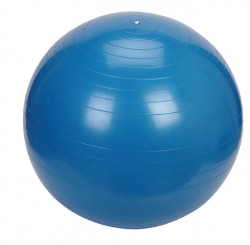
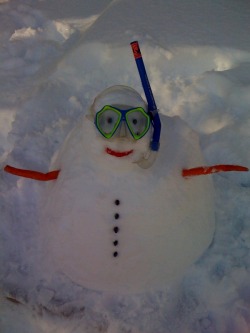

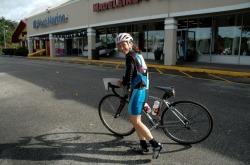
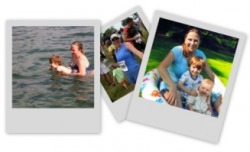
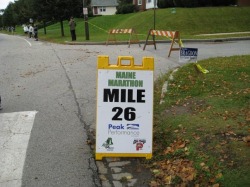
 RSS Feed
RSS Feed